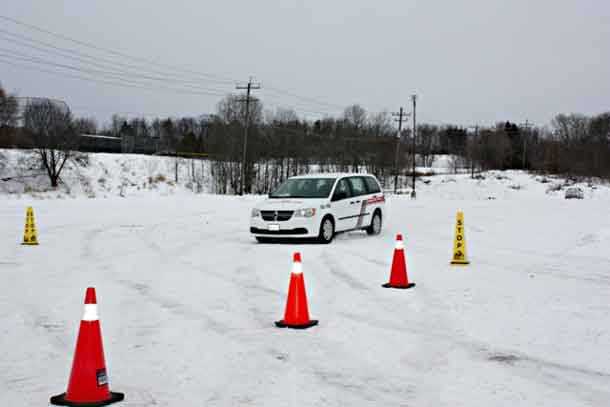THUNDER BAY – LIVING – Ontario Provincial Police (OPP) wants to ensure drivers stay safe during the upcoming snowy season while travelling on the roads.
Winter tires
Winter tires are designed to move water. If the water isn’t moved away from the area in front of the tire, the car will hydroplane. The tire tread has grooves and channels to move water away to the sides, allowing the tire to stay in contact with the surface.
Putting winter tires on your vehicle:
•improves traction and control in frost, snow and icy conditions
•shortens braking distances by as much as 25%
Be sure to install four winter tires – never mix different types of tires on one vehicle.
Check your tires regularly for wear and pressure. Cold weather can bring down your tire pressure, and worn or damaged tires make it harder to drive safely.
How to recognize a winter tire
The easiest way to know a tire has been designed specifically for severe snow conditions is to look for the three-peak mountain snowflake symbol right on the tire.
All-season tires:
All-season tires don’t work the same on snow, ice or cold pavement. The stopping distance of a car with winter tires can be up to 30 to 40 percent shorter than one with all-season tires. The most important part of a winter tire is actually its rubber compound. They are designed to stay soft in freezing temperatures and very effective for 7 degrees Celsius and below. The tread compound used in all-season tires offers little cold weather traction and becomes hard, losing pliability and traction in freezing temperatures. Winter (snow) tires, however, are designed to help deliver safety and control in snow, slush, rain, ice and cold weather.
Driving in winter weather
Winter weather can be unpredictable but some extra preparation and caution can help you stay safe.
Before you leave
- Check the weather forecast. If it looks bad, delay your trip if you can
- Visit Track my Plow to find out where plows are on provincial highways (available in London, Chatham, Owen Sound, Niagara/Hamilton, Peel/Halton, Toronto, York, Durham, Simcoe County, Ottawa, Huntsville, Kingston West, Kingston East and Bancroft areas)
- Use Ontario 511 to check road conditions:
- web: ontario.ca/511
- Twitter: @511Ontario
- dial 511 (hands-free, voice-activated phone service)
- Clear ice and snow from your windows, lights, mirrors, and roof
Be prepared
Have emergency supplies with you – a charged cell phone, non-perishable food, water, flashlight, blanket, warm clothes, jumper cables, shovel and traction mats or sand.
The number one cause of motor vehicle collisions during snowy conditions is speed – driving too fast for road and weather conditions. Remember – ice and snow – keep it slow!
Visit https://www.ontario.ca/page/winter-driving for more Winter Driving Tips.



